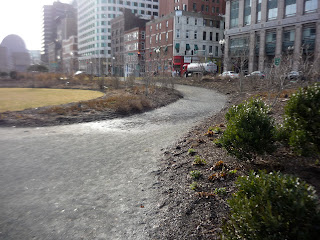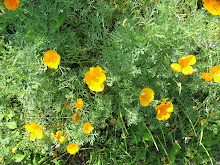 Thanks to Allan for sending me photos; I posted this one because it features almost everyone in attendance. If you click on photo to enlarge it you can make out the Steering Committee members in the back facing the crowd--I'm wearing yellow, Todd is left of me, John is right of me in a white shirt, Asa (in a black jacket with white stripes) is discussing the rules, Terry is right of her (in a maroon sweater). Roxane is sitting on the left side of the table, wearing a light blue shirt and taking notes on her laptop. Jennifer, who usually takes notes and chairs meetings, was taking a well-deserved vacation in Guatemala.
Thanks to Allan for sending me photos; I posted this one because it features almost everyone in attendance. If you click on photo to enlarge it you can make out the Steering Committee members in the back facing the crowd--I'm wearing yellow, Todd is left of me, John is right of me in a white shirt, Asa (in a black jacket with white stripes) is discussing the rules, Terry is right of her (in a maroon sweater). Roxane is sitting on the left side of the table, wearing a light blue shirt and taking notes on her laptop. Jennifer, who usually takes notes and chairs meetings, was taking a well-deserved vacation in Guatemala.We managed to finish ahead of schedule so I could (as treasurer) process the dues payments of everyone who had brought them. In past years different issues extended the meeting; at least once there were disagreements between dog owners and gardeners over where dogs could roam and do their business, and the year the shed was built there was much discussion about how to carry out that project. But this year dogs were hardly mentioned. Bees were, though, as Joe (one of the gardeners) presented some information in advance of a possible proposal to keep some at the garden, a project in such an early stage that it has not sparked any controversy. One item that members did want to discuss was how to better turn our weeds and plant waste into compost. Right now we don't have the capability and there are sanitation issues as well, but there seems to be enough interest and energy to investigate and implement a plan to change that.
If you are a member reading this post, I would like to remind you that there will be four Steering Committee seats to be filled in the election this May. Asa, Roxane, and I will stay on for the second year of our two-year term, but the four whose terms are ending have decided not to run again. Sure, there is work involved, and decisions to be made, but we only meet for two hours a month. I'd be happy to answer any questions you have (there's a link on my profile page if you want to email me), or you can contact the committee at mintonstablegarden@yahoo.com.










